The Evolution of Conveyors: Revolutionizing Material Handling
Date Posted:23 May 2024
Conveyors have transformed the landscape of modern industry, revolutionizing material handling processes and driving efficiency, productivity, and safety across various sectors.
Conveyors are the unsung heroes of modern industry, silently moving goods, materials, and products along production lines and distribution centers with remarkable efficiency. From automotive assembly plants to food processing facilities, conveyors play a vital role in streamlining material handling operations and optimizing workflow. In this article, we delve into the evolution, functionality, and diverse applications of conveyors, exploring how they have revolutionized material handling processes across various industries.
The Evolution of Conveyors:
The history of conveyors dates back to ancient times when humans used rudimentary systems such as ropes, pulleys, and wooden rollers to move heavy objects. However, the modern conveyor system as we know it today began to take shape during the Industrial Revolution in the 19th century. The invention of the steam engine and advancements in metallurgy enabled the development of mechanized conveyor systems for coal mining and industrial manufacturing.
Functionality and Design:
Conveyors are mechanical devices designed to transport goods, materials, or products from one location to another along a predetermined path. They typically consist of a continuous belt, chain, or rollers supported by a series of rollers, pulleys, or idlers. Conveyors can be powered by electric motors, hydraulic systems, or pneumatic mechanisms, depending on the application and environment. They come in various configurations, including belt conveyors, roller conveyors, chain conveyors, screw conveyors, and overhead conveyors, each tailored to specific material handling requirements.
Diverse Applications:
Conveyors find applications across a wide range of industries and sectors, including manufacturing, logistics, mining, agriculture, and food processing. In manufacturing plants, conveyors are used for assembly line production, transporting components and subassemblies between workstations. In warehouses and distribution centers, conveyors facilitate the sorting, routing, and distribution of goods and packages for shipping and fulfillment operations. In mining and construction, conveyors are employed for transporting bulk materials such as ores, aggregates, and construction materials.
Efficiency and Productivity:
One of the primary advantages of conveyors is their ability to improve efficiency and productivity in material handling operations. By automating the movement of materials, conveyors reduce the need for manual labor, minimize handling time, and optimize workflow throughput. Conveyors enable continuous and consistent material flow, reducing bottlenecks and downtime in production processes. Additionally, conveyors can be integrated with sensors, scanners, and control systems to monitor and optimize material flow in real-time, further enhancing efficiency and productivity.
Safety and Ergonomics:
Conveyors contribute to improved safety and ergonomics in material handling operations by reducing manual handling tasks and minimizing the risk of accidents and injuries. By automating material transport, conveyors help prevent strains, sprains, and musculoskeletal injuries associated with lifting, carrying, and pushing heavy loads manually. Additionally, conveyors can be equipped with safety features such as emergency stop buttons, guards, and sensors to detect obstructions or anomalies in the conveyor system, enhancing workplace safety and compliance with regulatory standards.
Environmental Sustainability:
In addition to efficiency and safety benefits, conveyors support environmental sustainability by reducing energy consumption and emissions associated with material transport. Compared to traditional methods such as forklifts or trucks, conveyors require less energy to operate and generate fewer emissions, contributing to lower carbon footprints and reduced environmental impact. Additionally, conveyors can be designed with energy-efficient motors, regenerative braking systems, and variable speed controls to further optimize energy usage and minimize environmental footprint.
Conveyors have transformed the landscape of modern industry, revolutionizing material handling processes and driving efficiency, productivity, and safety across various sectors. From manufacturing and logistics to mining and agriculture, conveyors play a vital role in streamlining operations, optimizing workflow, and enhancing environmental sustainability. As industries continue to evolve and innovate, the versatility and efficiency of conveyors as essential tools for material handling will remain indispensable in shaping the future of industrial automation and efficiency.



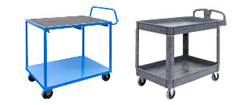

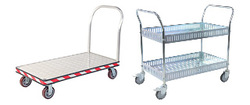
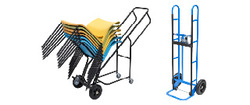
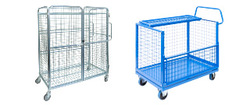
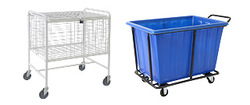
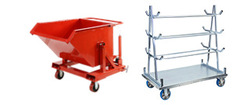
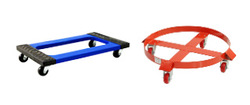
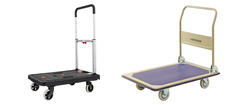
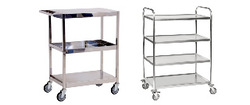
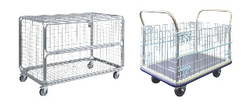
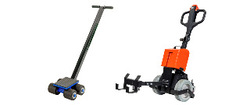
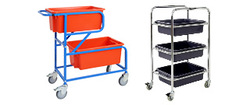
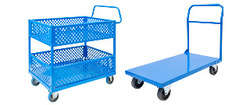
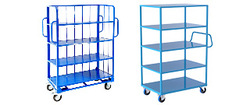
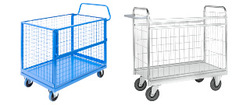
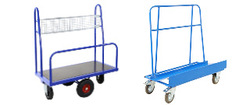
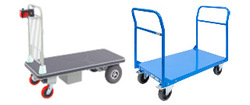
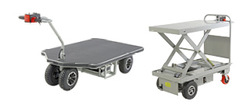
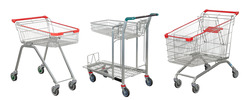
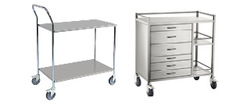
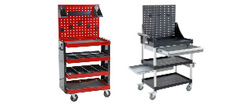
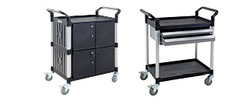
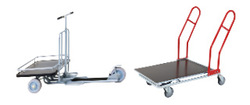
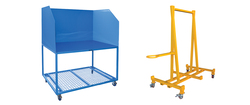



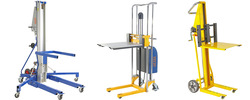



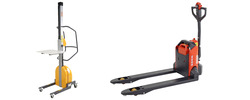
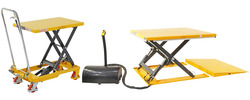
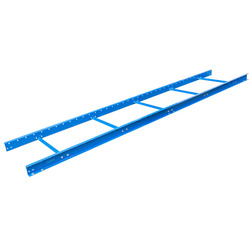
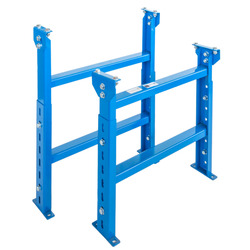
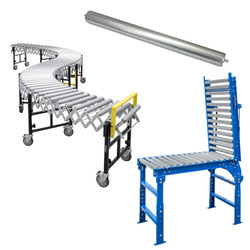
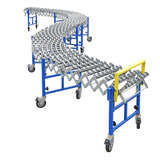


















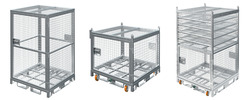

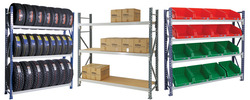
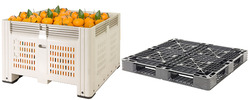
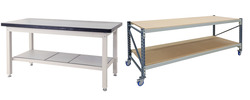
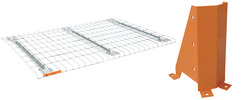
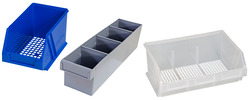



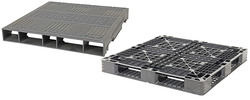

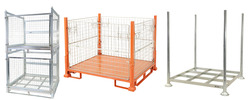
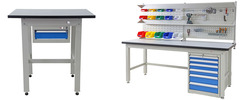
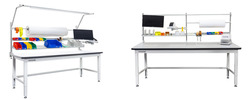






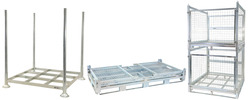
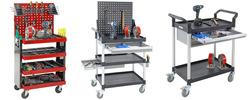














 Trolleys / Hand Trucks
Trolleys / Hand Trucks 2 Tier Trolleys
2 Tier Trolleys 3 Tier Trolleys
3 Tier Trolleys Aluminium Trolleys
Aluminium Trolleys Appliance & Hand Trucks
Appliance & Hand Trucks Cage Trolleys
Cage Trolleys Cleaning Carts & Trolleys
Cleaning Carts & Trolleys Construction Trolleys
Construction Trolleys Dollies
Dollies Foldable Trolleys
Foldable Trolleys Hospital Trolleys
Hospital Trolleys Laundry/Linen Trolleys
Laundry/Linen Trolleys Load Skates & Tow Tugs
Load Skates & Tow Tugs Mail / Office Trolleys
Mail / Office Trolleys Multi Purpose Trolleys
Multi Purpose Trolleys Multi-Tier Shelf Trolleys
Multi-Tier Shelf Trolleys Order Picking Trolleys
Order Picking Trolleys Panel Cart Trolleys
Panel Cart Trolleys Platform Trolleys
Platform Trolleys Powered Trolleys
Powered Trolleys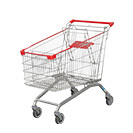 Shopping Trolleys
Shopping Trolleys Stainless Steel Trolleys
Stainless Steel Trolleys Tool Trolleys
Tool Trolleys Utility Carts
Utility Carts Warehouse Trolleys
Warehouse Trolleys Custom Trolleys
Custom Trolleys Lifting Equipment
Lifting Equipment Forklift Attachments
Forklift Attachments Jib Attachments
Jib Attachments Lifting Hoists & Pallet Hooks
Lifting Hoists & Pallet Hooks Manual Stackers & Lifters
Manual Stackers & Lifters Pallet Jacks
Pallet Jacks Pallet Lifters
Pallet Lifters Pallet Rotators & Dispenser
Pallet Rotators & Dispenser Powered Pallet Trucks & Electric Lifters
Powered Pallet Trucks & Electric Lifters Scissor Lift Trolleys and Tables
Scissor Lift Trolleys and Tables Conveyor Equipment
Conveyor Equipment Conveyor Frames
Conveyor Frames Conveyor Stands
Conveyor Stands Roller Conveyors
Roller Conveyors Skate Wheel Conveyors
Skate Wheel Conveyors Access Equipment
Access Equipment Container & Yard Ramps
Container & Yard Ramps Step Stools & Ladders
Step Stools & Ladders Work Platforms & Crane Cages
Work Platforms & Crane Cages Drum Handling
Drum Handling Drum Storage & Bunding
Drum Storage & Bunding Drum Trolleys & Lifters
Drum Trolleys & Lifters Forklift Drum Handling
Forklift Drum Handling Containment & Spillage
Containment & Spillage Aerosol Cans Storage Cages
Aerosol Cans Storage Cages Bunded Pallets & Storage
Bunded Pallets & Storage Corrosive Goods Storage Cabinets
Corrosive Goods Storage Cabinets Flammable Liquid Cabinets
Flammable Liquid Cabinets Forklift Gas Storage Cages
Forklift Gas Storage Cages Gas Cylinder Storage
Gas Cylinder Storage Site Storage
Site Storage Spill Kits
Spill Kits Stillage Cages
Stillage Cages Waste Handling
Waste Handling Bin Lifters & Tippers
Bin Lifters & Tippers Plastic Waste Bins and Carts
Plastic Waste Bins and Carts Steel Waste and Tipping Bins
Steel Waste and Tipping Bins Storage Equipment
Storage Equipment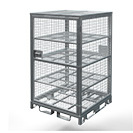 750 Series Cage Configurations
750 Series Cage Configurations Heavy Duty Cabinets & Benches
Heavy Duty Cabinets & Benches Heavy Duty Shelving
Heavy Duty Shelving Mega Bins & Pallets
Mega Bins & Pallets Packing Benches
Packing Benches Pallet Racking Accessories
Pallet Racking Accessories Parts Trays & Stor-Pak Bins
Parts Trays & Stor-Pak Bins Pegboard & Louvre Panels
Pegboard & Louvre Panels Plastic Bins
Plastic Bins Plastic Handling Solutions Bins
Plastic Handling Solutions Bins Plastic Pallets
Plastic Pallets Stack & Nest Bins
Stack & Nest Bins Storage Cages
Storage Cages Workplace Equipment
Workplace Equipment Workbenches
Workbenches Modular Workbenches
Modular Workbenches Electric Height-Adjustable Workbenches
Electric Height-Adjustable Workbenches Floor Matting
Floor Matting Industrial Weighing Scales
Industrial Weighing Scales Pallet Wrapping & Packaging Machinery
Pallet Wrapping & Packaging Machinery Ramps
Ramps Stationery Cupboards
Stationery Cupboards Storage and Stillage Cages
Storage and Stillage Cages Tool Trolleys
Tool Trolleys Tooling Cabinets
Tooling Cabinets Wheelie Bins
Wheelie Bins Workshop Equipment
Workshop Equipment Safety Equipment
Safety Equipment Gloves and PPE
Gloves and PPE Pallet Rack Post Protectors
Pallet Rack Post Protectors Safety Barriers & Bollards
Safety Barriers & Bollards Safety Knives & Cutters
Safety Knives & Cutters Signs and Traffic Supplies
Signs and Traffic Supplies Tool & First Aid Boxes
Tool & First Aid Boxes Construction Equipment
Construction Equipment Concrete Equipment
Concrete Equipment General Site Equipment
General Site Equipment Lifting Equipment
Lifting Equipment Site Storage
Site Storage Waste
Waste 










